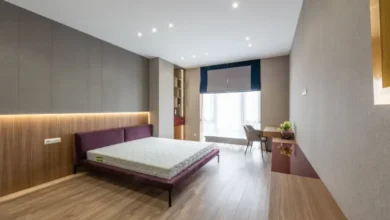Tips for Building an Off-Grid Cabin on a Budget
If the idea of escaping into nature and getting away from the hustle, bustle, stress, and pressure of the modern world has ever appealed to you, you’re not alone. Humans were designed to live off the land. We never intended to live our entire lives in air-conditioned, artificially illuminated spaces connected to internet devices where we virtually communicate with people over chat software and video conference platforms. These things aren’t evil, but they’re not how we were programmed.
In the past, living off the land was a fairly normal thing. The vast majority of early settlers in America – as well as those who moved west during expansion – lived what we would now call “off the grid.” And even today, when land is much scarcer and the pull of modern pleasures is strong, it’s possible to get away from it all by building and living in an off-grid cabin.
What is an Off-Grid Cabin?
Off-grid living is all about peace, serenity, and sustainability. It’s about detaching yourself from one or more public utilities and learning how to live off the land (either some of the time or full-time).
“Some people, in pursuit of a more rugged version of off-grid living, cut themselves off from the system completely and, in addition to sourcing water and power independently, live without technology and grow their own food,” LogHome.com explains.
Other people still have internet and electricity, but simply choose to live in a more remote area where there are fewer restrictions, building codes, neighbors, and modern nuisances.
An off-grid cabin can be whatever you want it to be. However, it doesn’t have to be expensive. It’s possible to build a small cabin for anywhere from several hundred dollars to a few thousand dollars.
Budget-Friendly Off-Grid Cabin Tips
If you’re thinking about building an off-grid cabin, there are several things you should know in order to keep costs down and be smart with your limited budget. Let’s take a look:
- Keep it Small
Bigger means more time, more expense, and more problems. Smaller means a faster build, lower costs, and fewer issues. You don’t need a 3,000-square-foot property. In fact, you probably don’t even need a 1,000-square-foot cabin. A simple 200- to 500-square-foot cabin is enough for most people.
- Buy Recycled Materials
Keep costs low by building with recycled materials. If you’re building in a wooded area, consider thinning out some of the trees and using a sawmill to mill your own lumber. (You can rent one, or even buy one, rather inexpensively compared to the price of lumber.)
You can also find building supply stores that collect excess materials from contractors and job sites and resell them for pennies on the dollar. This is a great way to find windows, doors, tile, sinks, and trim.
- Think About Heating and Cooling
Spring and fall tend to be pretty comfortable times for off-grid cabin living. However, depending on the part of the country you’re in, winters and summers can be downright brutal (and even dangerous) if you don’t have a plan for heating and cooling.
- Heating: For the interior of your cabin, use a wood stove with a simple pipe that vents outside. For the exterior, you can either use a good old-fashioned wood fire pit or a more modern propane fire pit. (Propane is great if you want something that you can just flip on with a moment’s notice.)
- Cooling: You can install a pretty simple DIY air conditioning system that connects to a solar generator for extremely hot days. Otherwise, solar-powered fans work really well.
Once you figure out a basic heating and cooling plan, everything else usually falls into place. Yes, you still have to think about plumbing, but that’s not nearly as vital. If you have a nearby water supply, you can get really creative.
- Invest in the Right Tools
You don’t need a world-class workshop loaded with the latest building tools and gadgets to construct a simple off-grid cabin. However, it does help to have the right tools. Here are some that you’ll want to acquire and/or set aside:
- A chainsaw is a must. You’re building in the middle of nature, after all. Having a chainsaw on hand allows you to cut down small trees, chopfallen timber, and even make rough cuts on lumber.
- A sharp ax. Again, this is a versatile tool that helps you do everything from fallen trees to notch lumber to split firewood.
- A good collection of basic hand tools. This includes a hammer, screwdrivers, drills, sledgehammer, utility knife, tape measure, levels, handsaws, and squares.
- Basic power tools, like a circular saw and jigsaw, are extremely handy and will make much faster work of cutting lumber for framing.
Putting it All Together
This obviously isn’t a comprehensive guide on how to build a cabin. However, the hope is that it’s provided some useful tips for building a cabin on a budget. Make sure you take your time and do plenty of research before starting the project. You’ll face challenges at every phase of the project, but your willingness to adapt and think creatively about roadblocks is what will allow you to be successful.




